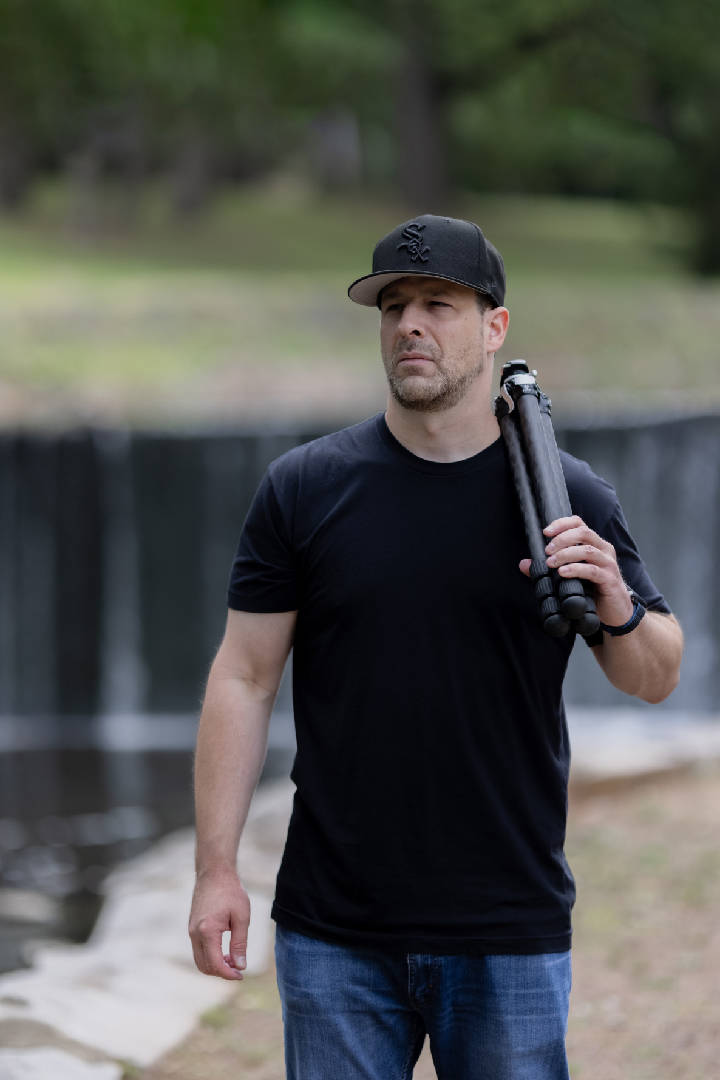Night Sky Adventures
Author: Mike Carroll
The beauty of our universe is certainly something I look forward to, especially the Milky Way. In this article, I'm going to discuss my planning and techniques for the night sky.
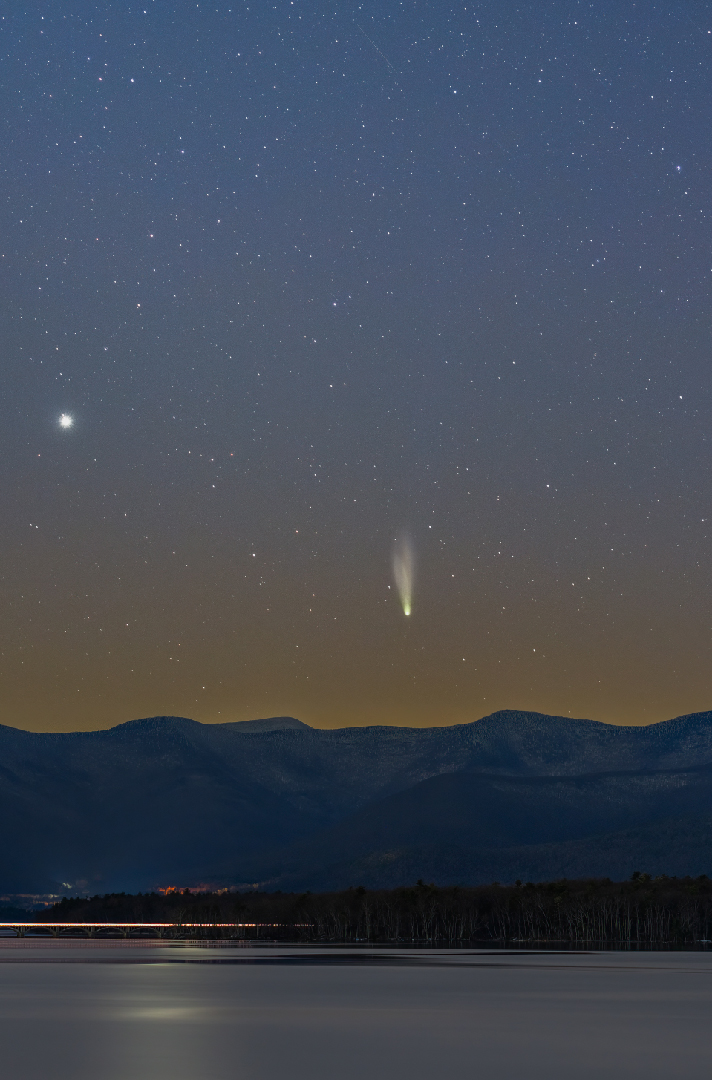
Comet 12P/Pons-Brooks, Sigma 50mm f/1.4 Art DG DN, Sony a7R V
Planning Your Adventure
The sound of nature, shooting stars and that feeling of getting lost in yourself while youre under the night sky is priceless but how do I plan for my next adventure? Prior to heading out, the first task on my list is to check the bortle scale in the area I’m heading out to. There are an abundance amount of resources online to check the light pollution. Next, I check the weather, as that plays a vital role for my next adventure under the stars.
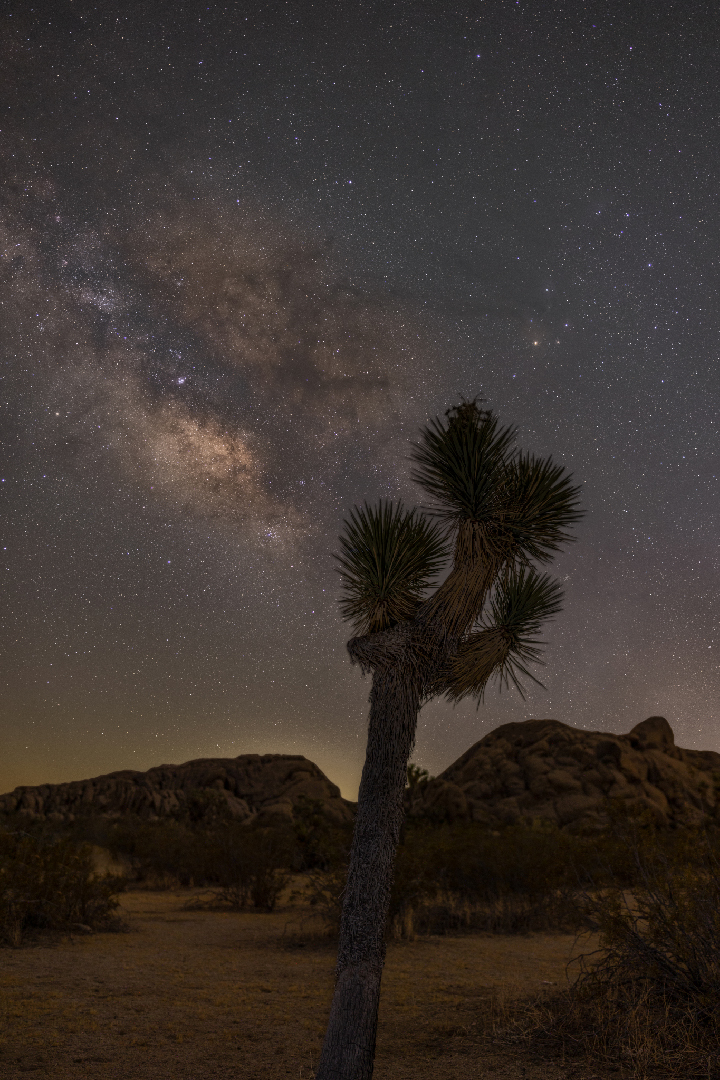
Joshua Tree National Park, California Sigma 28mm f/1.4 Art, Canon EOS R5)
Weather
The weather is one of the most important factors for shooting the night sky. Keep your weather notifications on, as those warnings can save you from driving long distance especially if you’re planning some star trails.
Here are some key points of what I look for on my next adventure
● very low cloud coverage
● calm wind conditions
● high humidity can put a damper on your images
● fog (keep an eye on the dew point and temperature. If they’re close together, there can be some potential fog!
● smoke (wildfires)
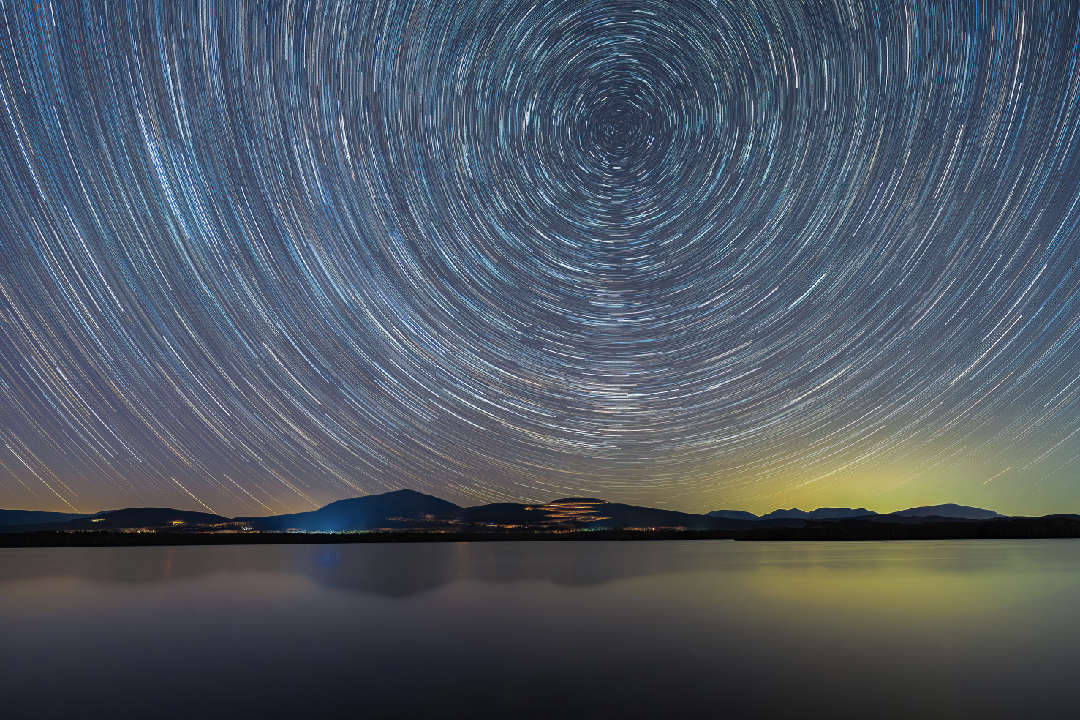
Star Trails, Ashokan Reservoir, Haida Clear-Night Rear Filter Sigma 14-24mm f/ 2.8 DG DN, Sony a7R V)
Shooting Locations/Apps
It’s best to scout your vantage point during the day, so you can see exactly what will be in your image. You can use the Night AR feature in PhotoPills to help you with your desired Milky Way alignment
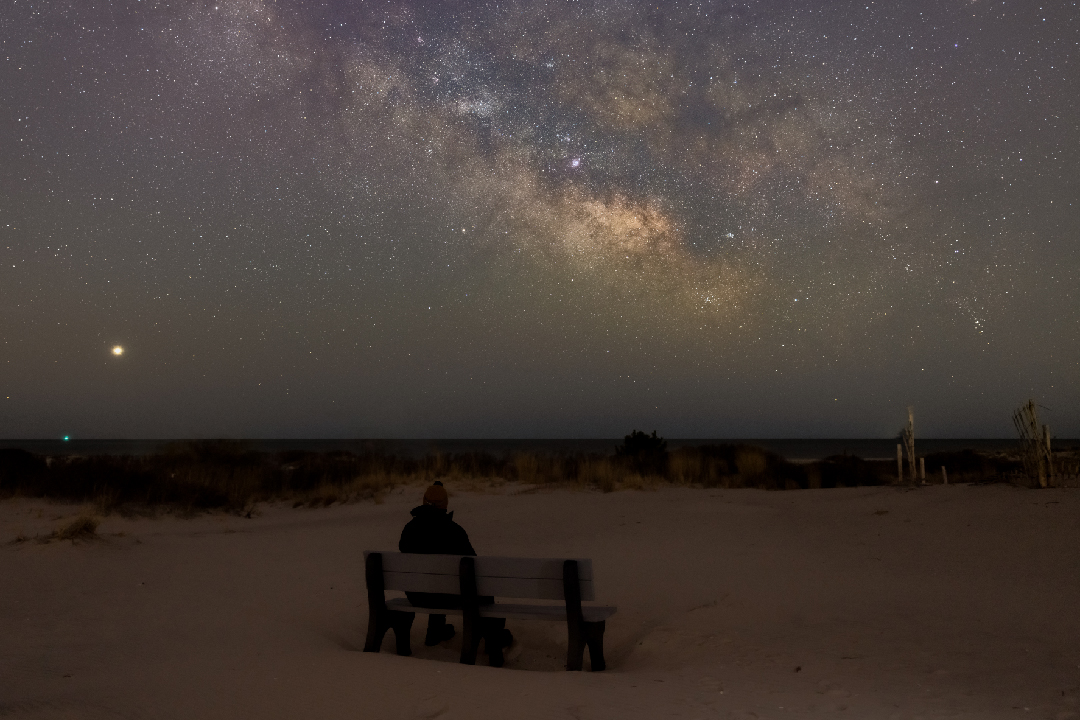
Relaxing on a bench at the beach, Barnegat Light, New Jersey. (Lume Cube 2.0, Sigma 28mm f/1.4, Canon EOS R5)
Light Pollution
As I mentioned earlier, the light polliution is something to consider when you’re planning your next shot. Is this image below, I had to battle the light pollution on the horizon. I also decided to capture this prior to moonset. Sometimes, the moon can provide lighting that’s needed in certain situations such as this image below at Joshua Tree National Park
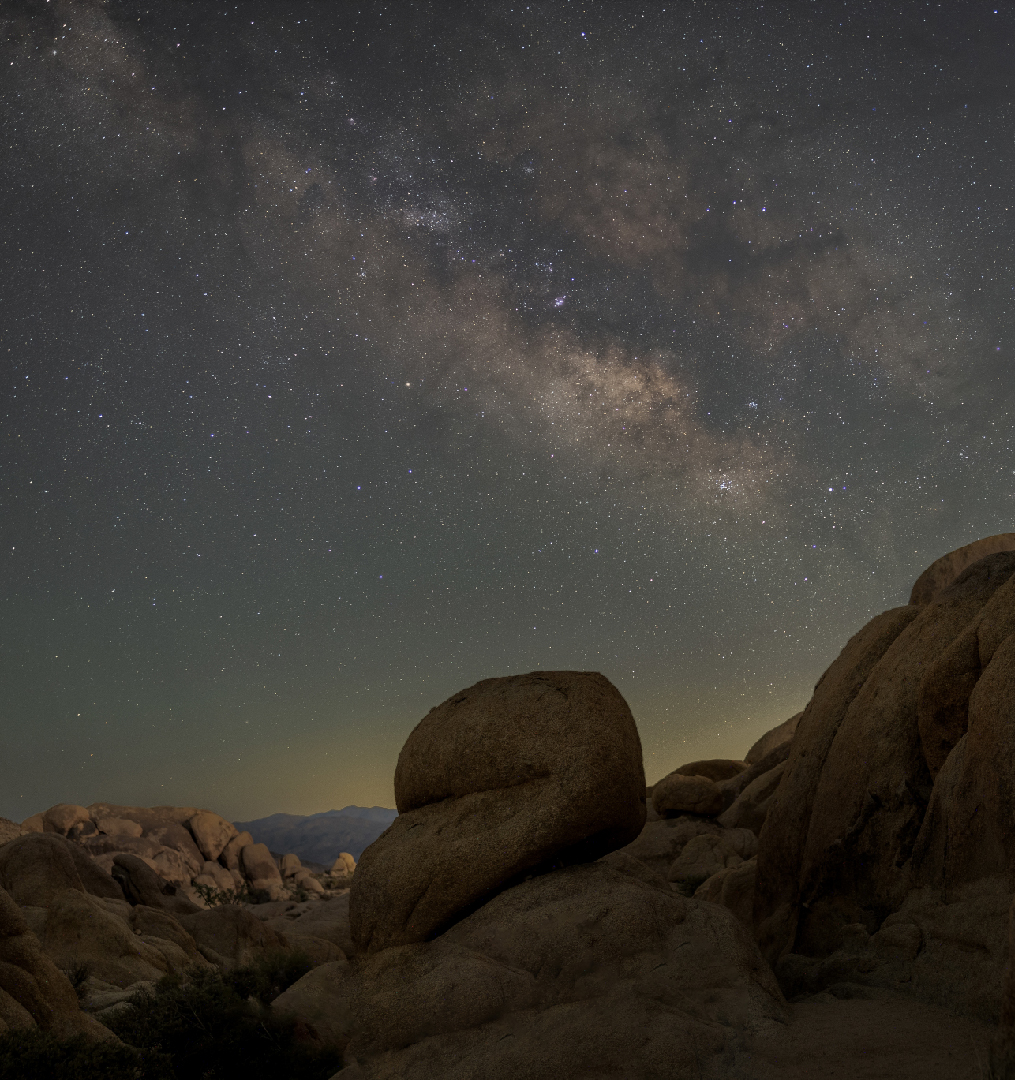
Joshua Tree National Park, California. (Lume Cube 2.0, Sigma 28mm f/1.4 Art, Sony a7 iv)
Foreground Options
There’s always something that I look for on the foreground while setting up my composition. It can be anything from a bench, branches, flowers, etc. Look for something appealing and take a test shot by shining your light on the foreground to see what it looks like. My advice is to refrain from staying in one spot for too long because you could be missing out on other opportunities for other compositions. Please keep in mind, that your alignments are going to change, as the Galactic Core is moving Is this image below, the Lume Cube 2.0 certainly helped the details of the elements on the foreground
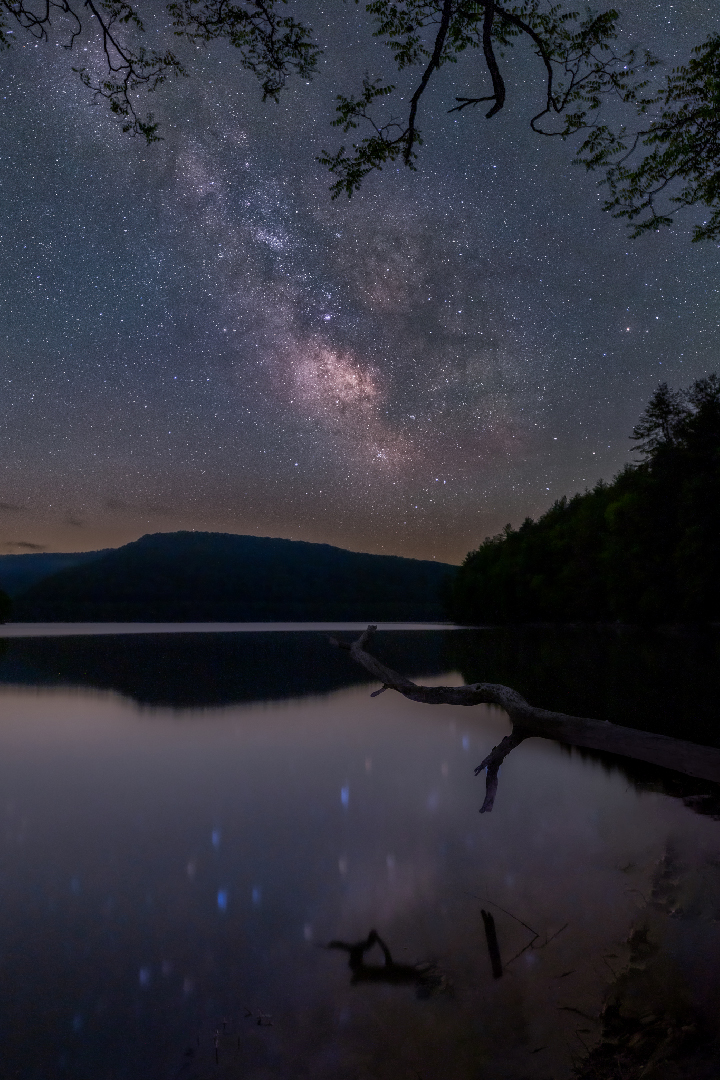
Milky Way Refelection, Pepacton Reservior, Upstate, New York (Lume Cube 2.0, Sigma 14-24mm f/2.8 Art, Canon EOS R5)
Shooting The Milky Way
For the best results, you should use a full frame camera, such as a mirrorless or DSLR. Use a lens with a fast aperture of f/1.4 or f/2.8. The Sigma 28mm f/1.4 Art is my go to lens for the night sky. You can also use a wide angle zoom with a constant f/2.8 aperture that way you have more options for compositions and a more desired focal length. As for as settings, I usually shoot around f/1.8 and I keep the shutter between 5-10 seconds to avoid star trailing, I turn up the ISO to compensate for the my exposure.
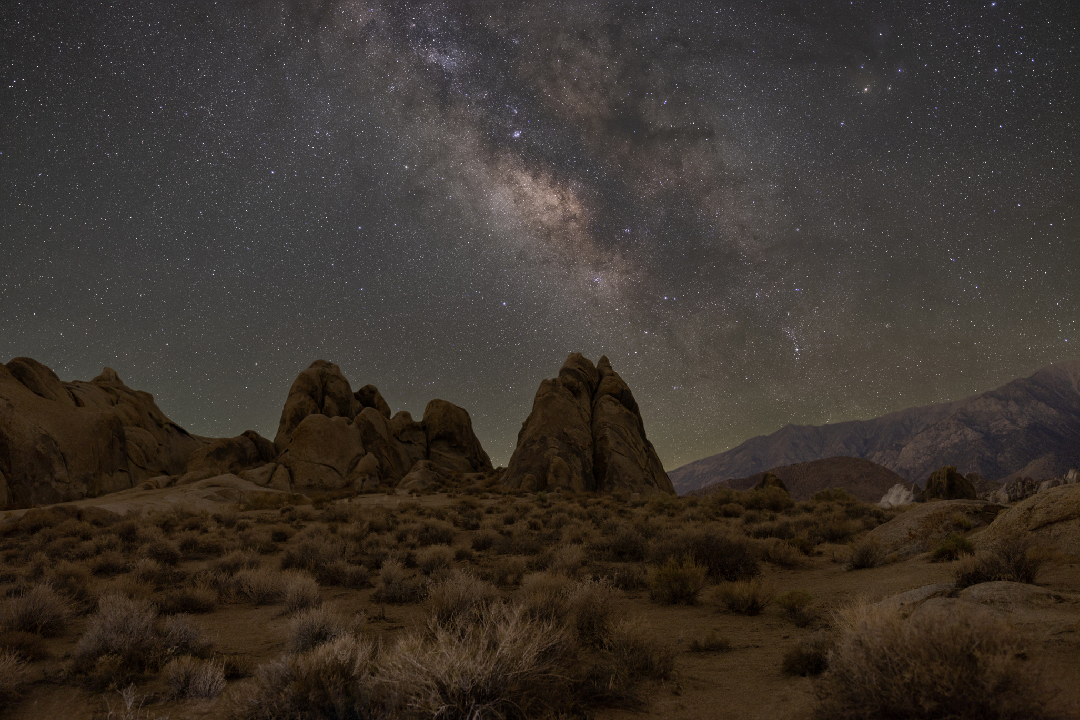
Alabama Hills, California (Lume Cube 2.0, Sigma 28mm f/1.4 Art, Canon EOS R5)
About The Author: Mike Carroll
Mike Carroll is a professional landscape and night photographer who has a passion for moon photography, astrophotography, concert photography, long exposures and cityscapes.
Born and raised in New Jersey, Mike is a former musician who started his craft by photographing live music performances. His dedication towards photography has taken his journey from the sun to the moon and even the Milky Way — It’s all about getting that once in a lifetime shot!
Mike will plan his shoots a couple of weeks in advance. Preparation is key to capturing that big moon or that lightning shot — Even if he finds himself running in a thunderstorm to a location or navigating in the dark to shoot the moon.
He was recently featured on the TV station News 12 NJ for his time lapse of the SpaceX Falcon 9 Rocket over New Jersey. In addition, the rocket was also published on Accuweather, Yahoo and MSN. Other TV stations where his work was featured on were WPIX & NY1. Mike is an author for the Sigma Photo Blog.
Social media contact
Instagram @jerseyportraits
Facebook @mikecarrollphoto
His awards include:
•2019, 2020 & 2021 PhotoPills Award Book
•2023, 2019 Empire State Building Photo Contest Finalist
•2023 World Trade Center - featured inside 7 WTC Art exhibit - Silverstein Properties
•2020 NJ Monthly Magazine First Place
•2021 NJ Monthly Magazine Runner Up
•2022 Printique Weekly photo contest winner
